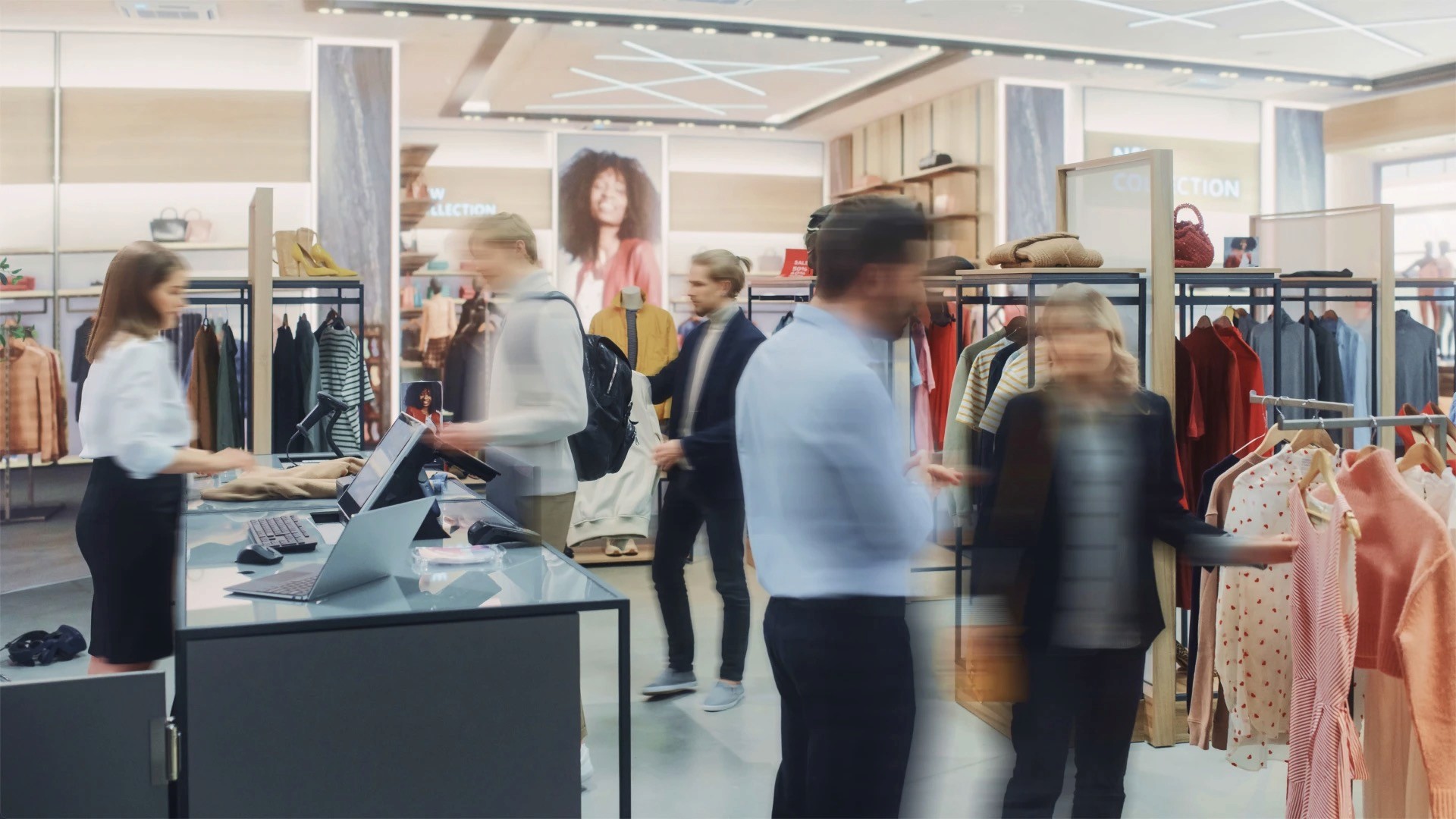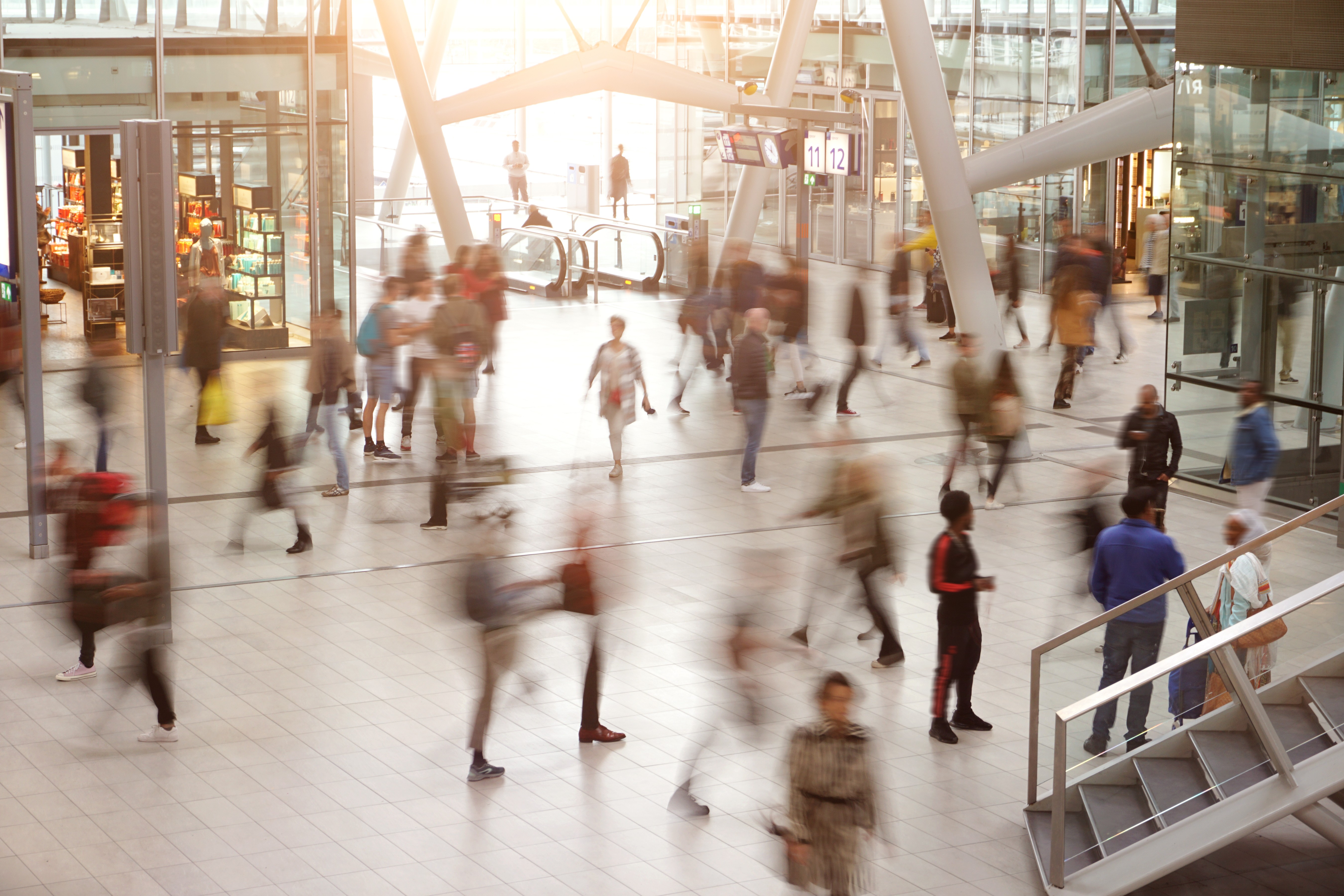How footfall intelligence transforms your retail operations.
We all know that understanding your customers is crucial in any industry – from hospitality to healthcare, and yes, most definitely in retail. Footfall data, gathered through tracking systems, provides valuable insights into how visitors move through a space. This data helps businesses improve store layouts, enhance customer experiences, and optimise operations. Whether you're managing a large shopping centre or a small boutique, the ability to track and analyse foot traffic allows you to make smarter, data-driven decisions that lead to better outcomes.
18 nov 2024


What is footfall data and why does it matter?
Footfall data refers to the information collected from tracking how people enter and move through a physical space. This data goes beyond just counting the number of visitors – it captures when they come, where they go, and how long they spend in specific areas. Retailers can use this information to understand customer behaviour more deeply and make strategic decisions to improve their business.
From advanced camera systems to sensors that detect movement, there are various tools available to gather this data. The key is to ensure that the data is accurate and actionable, offering a true reflection of customer traffic and behaviours.
Improving store operations
One of the primary benefits of footfall data is its ability to enhance store operations. Retailers can identify busy times of the day or week, allowing them to optimise staffing levels. This ensures that there are enough employees available to assist customers during peak hours, while avoiding unnecessary labour costs during quieter periods.
Additionally, understanding where customers tend to spend the most time can help with store layout and product placement. Retailers can strategically position high-demand products in areas with more foot traffic, creating a more engaging and efficient shopping experience.
Taking customer experience to a next level
Customer satisfaction plays a major role in business success, and footfall data helps retailers improve the overall shopping experience. By tracking how people navigate the store, businesses can identify pain points – like bottlenecks or areas that may feel overcrowded – and make adjustments to improve flow.
Furthermore, knowing where customers linger helps retailers understand which areas are most engaging. By placing promotional displays or popular products in these spots, businesses can capture more attention and increase the likelihood of purchases.
Maximising marketing and sales opportunities
Footfall data is also a powerful tool for refining marketing strategies. By understanding the times when stores experience higher traffic, retailers can plan sales promotions or events for maximum impact. They can also track how foot traffic correlates with sales data to assess whether marketing campaigns are effectively driving more visitors into the store.
For example, if footfall increases significantly during a specific promotion, businesses can analyse what drove the traffic and replicate successful tactics in the future. Similarly, retailers can experiment with the timing and placement of in-store advertisements based on where and when foot traffic peaks.
Unlocking the potential of footfall data
Footfall data isn't just about counting visitors – it’s about understanding what those numbers mean and using that insight to drive better business outcomes. By analysing how customers move through your store, you can optimise staffing, refine marketing efforts, enhance store layouts, and improve overall customer satisfaction. In a competitive retail landscape, these small improvements can lead to big rewards.
What is footfall data and why does it matter?
Footfall data refers to the information collected from tracking how people enter and move through a physical space. This data goes beyond just counting the number of visitors – it captures when they come, where they go, and how long they spend in specific areas. Retailers can use this information to understand customer behaviour more deeply and make strategic decisions to improve their business.
From advanced camera systems to sensors that detect movement, there are various tools available to gather this data. The key is to ensure that the data is accurate and actionable, offering a true reflection of customer traffic and behaviours.
Improving store operations
One of the primary benefits of footfall data is its ability to enhance store operations. Retailers can identify busy times of the day or week, allowing them to optimise staffing levels. This ensures that there are enough employees available to assist customers during peak hours, while avoiding unnecessary labour costs during quieter periods.
Additionally, understanding where customers tend to spend the most time can help with store layout and product placement. Retailers can strategically position high-demand products in areas with more foot traffic, creating a more engaging and efficient shopping experience.
Taking customer experience to a next level
Customer satisfaction plays a major role in business success, and footfall data helps retailers improve the overall shopping experience. By tracking how people navigate the store, businesses can identify pain points – like bottlenecks or areas that may feel overcrowded – and make adjustments to improve flow.
Furthermore, knowing where customers linger helps retailers understand which areas are most engaging. By placing promotional displays or popular products in these spots, businesses can capture more attention and increase the likelihood of purchases.
Maximising marketing and sales opportunities
Footfall data is also a powerful tool for refining marketing strategies. By understanding the times when stores experience higher traffic, retailers can plan sales promotions or events for maximum impact. They can also track how foot traffic correlates with sales data to assess whether marketing campaigns are effectively driving more visitors into the store.
For example, if footfall increases significantly during a specific promotion, businesses can analyse what drove the traffic and replicate successful tactics in the future. Similarly, retailers can experiment with the timing and placement of in-store advertisements based on where and when foot traffic peaks.
Unlocking the potential of footfall data
Footfall data isn't just about counting visitors – it’s about understanding what those numbers mean and using that insight to drive better business outcomes. By analysing how customers move through your store, you can optimise staffing, refine marketing efforts, enhance store layouts, and improve overall customer satisfaction. In a competitive retail landscape, these small improvements can lead to big rewards.
What is footfall data and why does it matter?
Footfall data refers to the information collected from tracking how people enter and move through a physical space. This data goes beyond just counting the number of visitors – it captures when they come, where they go, and how long they spend in specific areas. Retailers can use this information to understand customer behaviour more deeply and make strategic decisions to improve their business.
From advanced camera systems to sensors that detect movement, there are various tools available to gather this data. The key is to ensure that the data is accurate and actionable, offering a true reflection of customer traffic and behaviours.
Improving store operations
One of the primary benefits of footfall data is its ability to enhance store operations. Retailers can identify busy times of the day or week, allowing them to optimise staffing levels. This ensures that there are enough employees available to assist customers during peak hours, while avoiding unnecessary labour costs during quieter periods.
Additionally, understanding where customers tend to spend the most time can help with store layout and product placement. Retailers can strategically position high-demand products in areas with more foot traffic, creating a more engaging and efficient shopping experience.
Taking customer experience to a next level
Customer satisfaction plays a major role in business success, and footfall data helps retailers improve the overall shopping experience. By tracking how people navigate the store, businesses can identify pain points – like bottlenecks or areas that may feel overcrowded – and make adjustments to improve flow.
Furthermore, knowing where customers linger helps retailers understand which areas are most engaging. By placing promotional displays or popular products in these spots, businesses can capture more attention and increase the likelihood of purchases.
Maximising marketing and sales opportunities
Footfall data is also a powerful tool for refining marketing strategies. By understanding the times when stores experience higher traffic, retailers can plan sales promotions or events for maximum impact. They can also track how foot traffic correlates with sales data to assess whether marketing campaigns are effectively driving more visitors into the store.
For example, if footfall increases significantly during a specific promotion, businesses can analyse what drove the traffic and replicate successful tactics in the future. Similarly, retailers can experiment with the timing and placement of in-store advertisements based on where and when foot traffic peaks.
Unlocking the potential of footfall data
Footfall data isn't just about counting visitors – it’s about understanding what those numbers mean and using that insight to drive better business outcomes. By analysing how customers move through your store, you can optimise staffing, refine marketing efforts, enhance store layouts, and improve overall customer satisfaction. In a competitive retail landscape, these small improvements can lead to big rewards.
Explore
Want to know more?
Embrace footfall intelligence to turn raw data into powerful business strategies. With the right tools and insights, you can create an experience that not only attracts more visitors but also converts them into loyal, satisfied customers.

Explore
Want to know more?
Embrace footfall intelligence to turn raw data into powerful business strategies. With the right tools and insights, you can create an experience that not only attracts more visitors but also converts them into loyal, satisfied customers.

Explore
Want to know more?
Embrace footfall intelligence to turn raw data into powerful business strategies. With the right tools and insights, you can create an experience that not only attracts more visitors but also converts them into loyal, satisfied customers.




